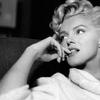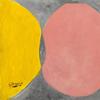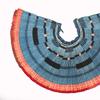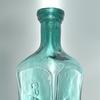AND, ALREADY, WORDS: Contemporary Text-based Work at YI GALLERY
- BROOKLYN, New York
- /
- January 03, 2022

AND, ALREADY, WORDS
CONTEMPORARY TEXT-BASED WORK
JAN 8 - MAR 5, 2022
This exhibition is both a love letter to the use of text in visual art and a probe into the power of words as a medium of expression. The artists in the exhibition, whose work ranges from neon sculpture, ceramics and oil painting to the radical use of ephemeral materials, such as breast milk on paper, have adopted innovative strategies of authoring, reproducing and recontextualizing language. Formations of language, with their infinite visual and perceptual possibilities, become conceptually and aesthetically striking images that invite diverse interpretations. These personal, political and poetic statements ruminate on consumerism, mass communication and human connection.
Working primarily in oil and watercolor, Paris-based artist and illustrator Li Xia explores ephemeral moments and commonplace objects in daily life, expressed through carefully composed planes of flat colors and nuanced strokes. Both representational and imaginary spaces come alive in Li’s work, with her sensitive attention to the ordinary and the fleeting.
Li has a habit of jotting down notes - appointment dates and locations, grocery shopping lists, a note to an acquaintance - on a post-it, a page torn from a notebook or on the back of a receipt. “I started to draw these little notes that appeared in my life. They are like proof of my existence. I draw my own or other people's handwriting, scribbled or serious handwriting.”
The painting represents a small note written in French by Li’s friend; “Bonne Nuit” means “Good Night.” One busy work night, she found this sweetly written note on her desk. She wanted to hold onto this moment and this note for eternity. It was written on a tiny piece of paper, only about 5 cm (2 inches), smaller than the palm of her hand. In the painting, the note was enlarged 20 times, and the thin piece of paper was reproduced through the application and layer of thick paint. Li wishes to enlarge, immortalize, and share with her viewers the love of a friend.
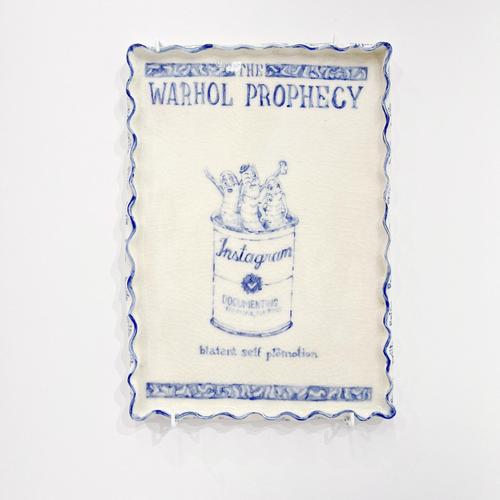
Securities is a new work in Senstad’s Capitalism in the Public Realm series, which includes Gold Guides Me (2014), Liquid Commodity (2015) and Liquid Assets (2021). Conceived during the production of her solo exhibition Music for Plutocracy in Norway, Senstad introduced the color red into the series - symbolizing power and state, as well as revolution, capitalist critique and denouncement. The ironic usage of evocative red, with its serious undertones, reflects the ongoing critique of ethics, value systems, humanism, societal sustainability, capitalism and greed in Senstad’s work. At once a philosophical inquiry and social political commentary, the sensorially stimulating ruby-red text provides a vehicle for reflection through light and color.
The word security brings to the forefront ideas of a safe world – family, infrastructure, guardianship, land, health, education, low risk, peacetime, sustainability – which constitutes a stable and well- balanced human society. In Senstad’s word game system, Securities is divided into two different ways of looking at the word: Secure Ties and Securi Ties. Secure Ties implies the safety of the state, mother or fatherland and the contractual obligations of citizenry. It implies loyalty and dependability, the bond of marriage and family bloodlines, while in other references it also symbolizes oppression, violence and dominance. In Securi Ties, the acrobatics of the finance world are rhythmically brought forth. Securities, by its very definition, implies the heart of the capitalist matter: you have to have something to trade with, everything is for sale and the stakes are high. Fungible and tradable assets are used to exchange or raise more wealth in the private and public market, where money and debt are the chief devices for wealth accumulation. The gambling table is open and the players never sleep.
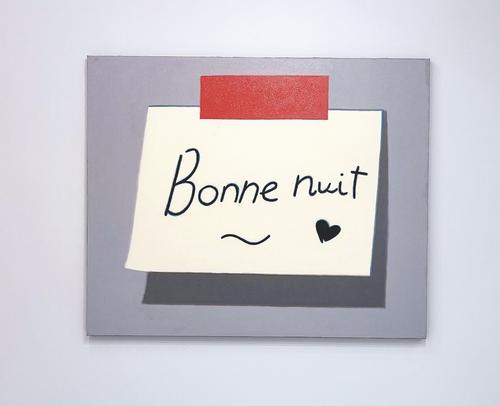
Red symbolizes love, passion, blood and devil, as seen in the fairy tale Little Red Riding Hood and in commercial signs, such as Coca-Cola, CNN and Johnson & Johnson. Red neon is seductive; it evokes images of the debaucherous red-light district in Amsterdam, Moulin Rouge in Paris and the iconic “Welcome to Las Vegas” sign. These are symbols of temptation, pleasure, lust and sin, and also the most fundamental forces behind trade, wealth accumulation and management of the most valuable exchangeable asset: human beings. Red means “stop” in traffic lights, signaling danger and urging obedience. Red is also the color of fire trucks, rescuing lives and enforcing security - a highly valued asset in a society for order and continuation of functioning urban existence.
For Secure Ties – Securi Ties (2021), Senstad uses the dye sublimation on aluminum print method she started with in 2016 for her photographic series, Sonoptic Parallels, and adds a layer of high gloss to enhance the combination of warm red and royal marine blue. Red and blue are colors on the opposite sides of the spectrum that create a vibrancy and intensity in the text composition, optically distorting the viewer's gaze. The text seemingly slowly starts to pulsate on the retina, altering the stationary letters. In her text works, Senstad works with Helvetica or her own handwriting, and uses text as matter, material, philosophical exploration and word play. The repetition of the word Ties, while Securi and Secure exchange the i and the e, interplaying and exchanging meaning with a single letter and two words, Secure Ties exists as it shall and is not an illusion of itself, while Securi Ties is a clear disillusion and deconstruction of its ownership and represents the loss of its assets and autonomous meaning of security.
The neon work is aligned with the critical text works in Senstad's ongoing research project Capitalism in the Public Realm, which she began in 2014 with a monumental sculpture, Gold Guides Me, commissioned for Triennale Brugge in Belgium. Using public art and architecture as vehicles to explore ideas of power, wealth, market, competition and dependence, Senstad addresses the search for personal liberation and satisfaction in our hyper-capitalist world.
The text examines the processes of descension and erosion of societal ethics through liquidation of human value and loss of ecological sustainability. By seemingly humorizing the underlying serious questions, Senstad plays with the language of finance and transforms the term for tradable commodities and assets into a cultural phrase. The term represents the action of commerce, seeking a prosperous outcome for one. Senstad turns it into a consumerist signage - commodification of ideas manifested in bright light as a neon sign in Helvetica letters – itself to be sold. By utilizing commercial mass production materials, reminiscent of Las Vegas nostalgia and advertising aesthetics, Senstad suggests that in an era of greed and spiritual crisis, everything and anything is for sale, speculated on and ready to be commoditized.
Hair in Kang's work represents a connection to home, identity and a link between the past and future. Personally, To My Mother is Kang's response to her mother’s illness: the feeling of being helpless and far away. Her shed hair on the floor reminded Kang of her mother’s battle with breast cancer - losing hair and losing her memories from Alzheimer’s soon after the cancer treatment - and their lost connection. Her mother's memory loss made Kang reflect on the human connections encased in memories and the fragility of the connection. It increased her emotional distance to her past and her home and the tension between the past and the future in which she exists. Kang stitched each letter onto the paper with her shed hair and mounted the paper onto thick blocks of wood to make both the narratives and hair tangible and permanent.
"The narrative embroidered on each panel is very personal and ephemeral, like the shed hair itself, and they could disappear any moment, as if everything I talk to my mother about is forgotten in seconds."
Shed hair is a metaphor for memory loss, detached self, isolation and disconnection. While shed hair is no longer physically part of a person, it still contains specific biological information. The only difference is in the loss of physical connection. This thought reflects how people relate and connect to each other. As a person living in between two cultures, feeling forever an outsider in either place, this thought also reflects how immigrants are often separated from their families, so that emotional connection is weakened or even lost over time and the people become more isolated from their homeland. Sewing hair into her work is Kang's attempt to reconnect and heal.
Kang's work focuses on the duality fundamental to human existence: of different realities or worlds, both in space and time, the tension between them and of the coexistence of antithetical ideas, how death implies life, how the material realm implies the unsubstantial or nonphysical and how absence implies presence. To explore this, she created both physical and metaphorical spaces, ranging from large installations to small, intimate books. She sees the audience as key to her work - completing it. Visually, Kang's work is minimal, delicate and obsessively repetitive. She is influenced by the Korean philosophy of Yeo-baek, as well as the monochrome paintings of the Korean Dansaekhwa artists. The materials she uses — mostly paper, thread, her own hair and lights — bear metaphoric meanings. Paper is both light and strong. The shed hair embroidered on paper is both hers and no longer hers.
The Patriot and JIF are works from the artist's Everything Works in America series. Through the lens of traditional American and Brazilian consumerist products, Abeid's ceramic sculptures explore an evolving perspective towards a country she applauds/applauded. Everything works in America were her first words in the U.S., in admiring shock at an outstanding example of efficiency that is possibly nonexistent in Brazil. But Abeid progressively noticed a lack of warmth from Americans and came to appreciate the art of improvisation in Brazil, the only place she called home. "In a way, we are what we consume, and a country is what it demands to consume." Says Abeid. Among the simplest forms and labels of American and Brazilian products lie subtle comparisons of two societies and their consumerism. The Warhol Prophecy was a consequential urge to objectify the evolution of the form and label, where we, as individuals, begin to be our own products and what we consume. The Warhol Prophecy was the first study for a series that discusses modern society and the need to document and expose oneself. We are served with a constant display of blatant self promotions on a daily basis, many times there is nothing special to promote or value, like a can full of worms. And in this case, have you been served today?
Cecilia Abeid is a Brazilian artist and designer, currently living and working in New York. While Abeid works with diverse mediums and techniques, including metal etching, lithography and animation, she has been dedicating herself more and more to stoneware sculptures. One of her many intents is to bring elements of magic and delight into everyday objects and situations of the mundane while still projecting a sense of motion and life into solid sculptures. Abeid’s ceramic sculptures explore the newfound perspective towards a material proven to be timeless. Fascinated by the capacity of how such a raw, natural mix of water and minerals can mimic reality so vividly, her intent is to capture a sense of doubt in the visual representation of her ceramic sculptures, while subtly leaving hints of a tiny world with a life and colors of its own. The artist states it is important to play around with how such a solid material (at its final step) can look so malleable and feel so tasty; in a world where eggs not only have faces, but also have personality; where bananas are big and unreal and, to an extent, even sexual. According to the artist, it is all about playing with textures, sizes and the sense that it goes beyond what your eyes can see.
Kathrine Duclos made the drawings in the Low Supply series using other mother’s donated expired frozen breast milk, or their “freezer stashes”. A freezer stash is many things to many mothers. It is security, time spent, effort, struggle, each mL (ounce) fought for, machine-sucked from their body. Whatever the reason for pumping, the frozen bags of breastmilk are heavy with emotion and hard to let go. They have a way of outlasting their use. Duclos’ color palette hints at wounds, bruising and healing. The breastmilk, as paint, creates a balance between soft and hard, organic and inorganic, weight and release, mirroring the soft natural breast and the hard plastic of the pump. Low Supply reveals a more nuanced, complex, and genuine picture of motherhood than the idealized version women have been sold for centuries.
The frozen bags become the only thing a mother has left of the breastfeeding experience. They are tangible evidence of something intangible that happened to their bodies, maybe something traumatic, maybe something perfect, probably somewhere in between. Breastfeeding is a thing mothers pass through mostly alone with their babies and then it is gone. Women are not given the space to process or talk about their breastfeeding experiences during or after. Any negative feelings of anxiety, resentment, sadness, burden, are rarely shared. These thoughts instead remain invisible in their heads. “I use other women’s milk to paint what I could not always say out loud as a way of honoring them.” Duclos States, “The milk goes on the paper invisible, a parallel to the invisible labor of breastfeeding and pumping. As the milk ages, subtle changes develop, making it more visible over time, lending permanence to something fleeting.”
Katherine Duclos received her MFA in Painting and Drawing from Pratt Institute in 2012 in Brooklyn, NY. After 10 years in New York, she moved to Vancouver, BC in late 2017 with her family, where she maintains a studio practice exploring painting, sculpture, photography, and installation. Her current work deals with themes of motherhood and its often invisible emotional toll.
#AndAlreadyWords #TextbasedArt #YiGallery
For additional information, please contact Cecilia Zhang Jalboukh at cecilia@gallery-yi.com or call / text +1 (929) 356-6087.
Contact:
Cecilia Yueyi JalboukhYI GALLERY
9293566087
cecilia@gallery-yi.com
254 36th Street
Building 2, Suite B634 / Buzzer 022
Brooklyn, New York



100x100_c.jpg)
